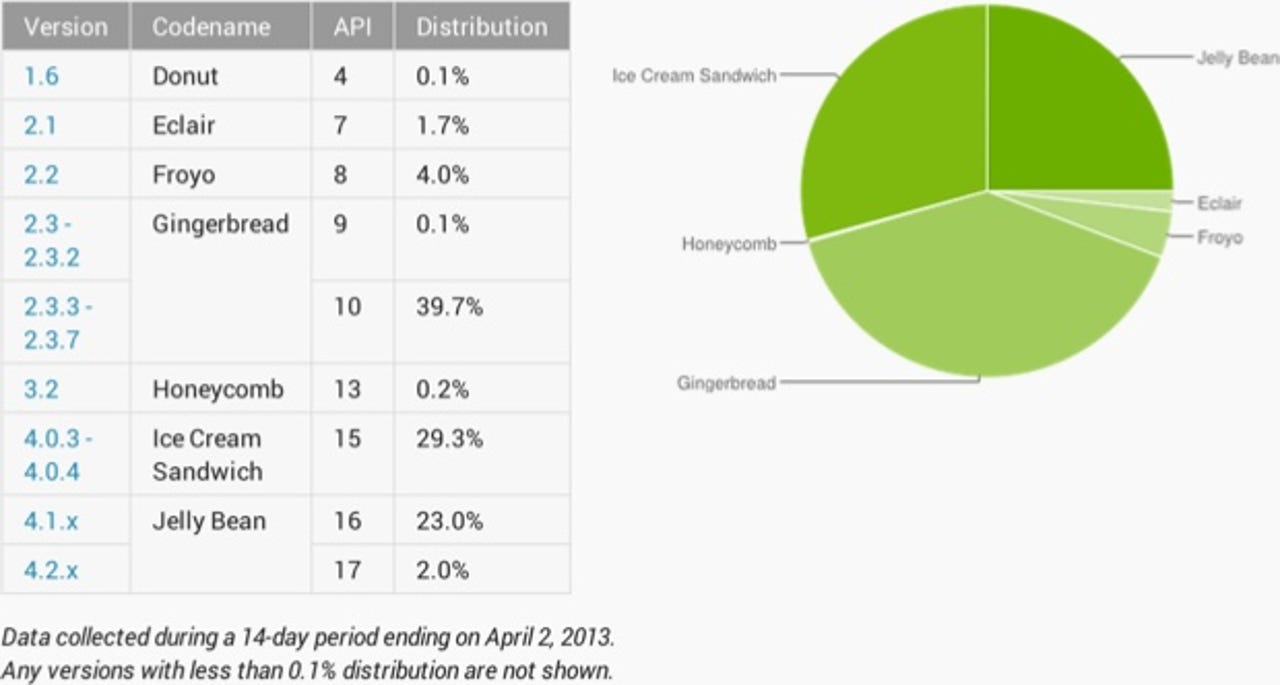Google changes how Android stats are collected

Search giant Google has changed the way that it collects statistics on Android device usage in an attempt to give developers a better picture of the version landscape.
Google used to collect information on the versions of Android in use by keeping a tally of automated check-ins to its servers, but this month, that system has been replaced with one where only devices accessing the Google Play store are counted.
News of the change was broken on Google's Android Developer Dashboard page.
Beginning in April 2013, these charts are now built using data collected from each device when the user visits the Google Play Store. Previously, the data was collected when the device simply checked in to Google servers. We believe the new data more accurately reflects those users who are most engaged in the Android and Google Play ecosystem.
This change in how the statistics are collected has given the most current versions of Android, 4.1.x and 4.2.x, otherwise known as Jelly Bean, a significant boost, up from 16.5 percent last month to a whopping 25 percent for the 14-day period ending on April 2, 2013.

Even under this new data collection regime, the most popular version of Android continues to be Android 2.3.3 to 2.3.7 Gingerbread, a version first released back in February 2011.
So, are these numbers twisted in Google's favor, or are they a more accurate representation of the Android versions in use?
My take on this is that the data on the Android Developer Dashboard is aimed at helping developers know what versions of Android are most popular in the Google Play store so they can write apps that target these platforms, and that this data was never meant to provide a metric as to Android usage. With that in mind, restricting the data collected to devices that actually access the store gives developers a fairer view of their potential audience.
However, by hanging the way the data is collected, Google has made it harder to get a full picture on what devices are in use, and the fact that the new collection method seems to skew the data in favor of the later versions of Android will no doubt take some of the pressure off Google to do more to get Android updates into the hands of users.